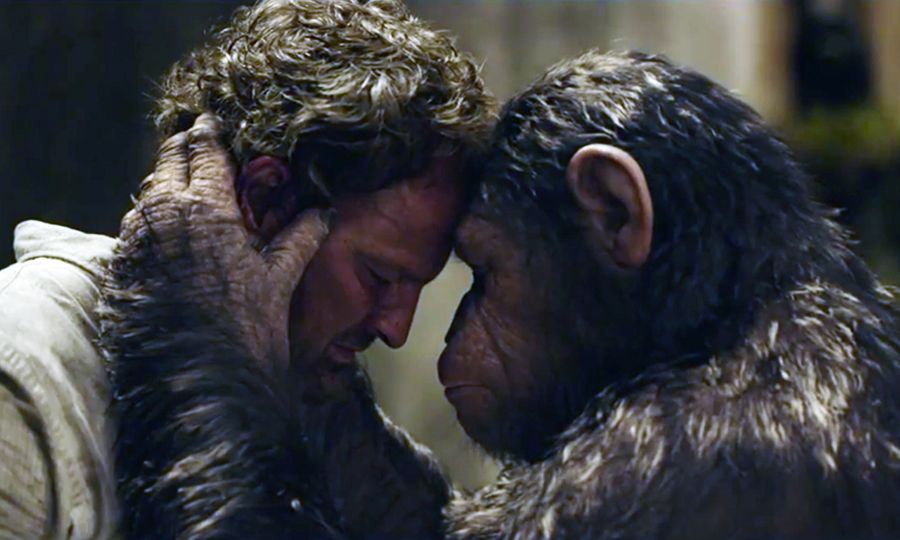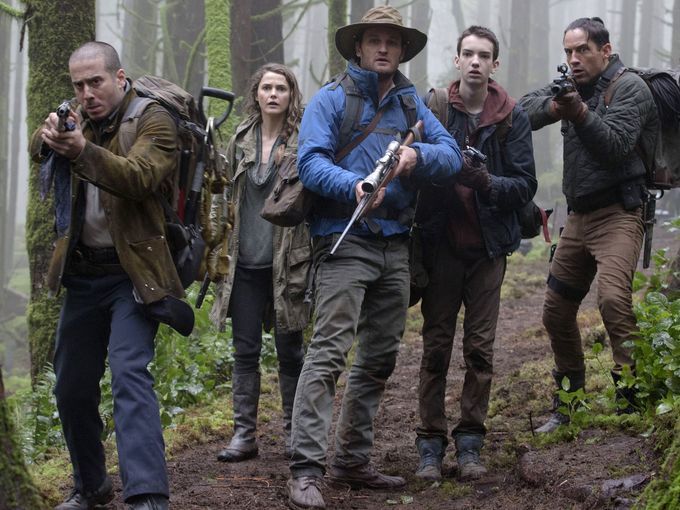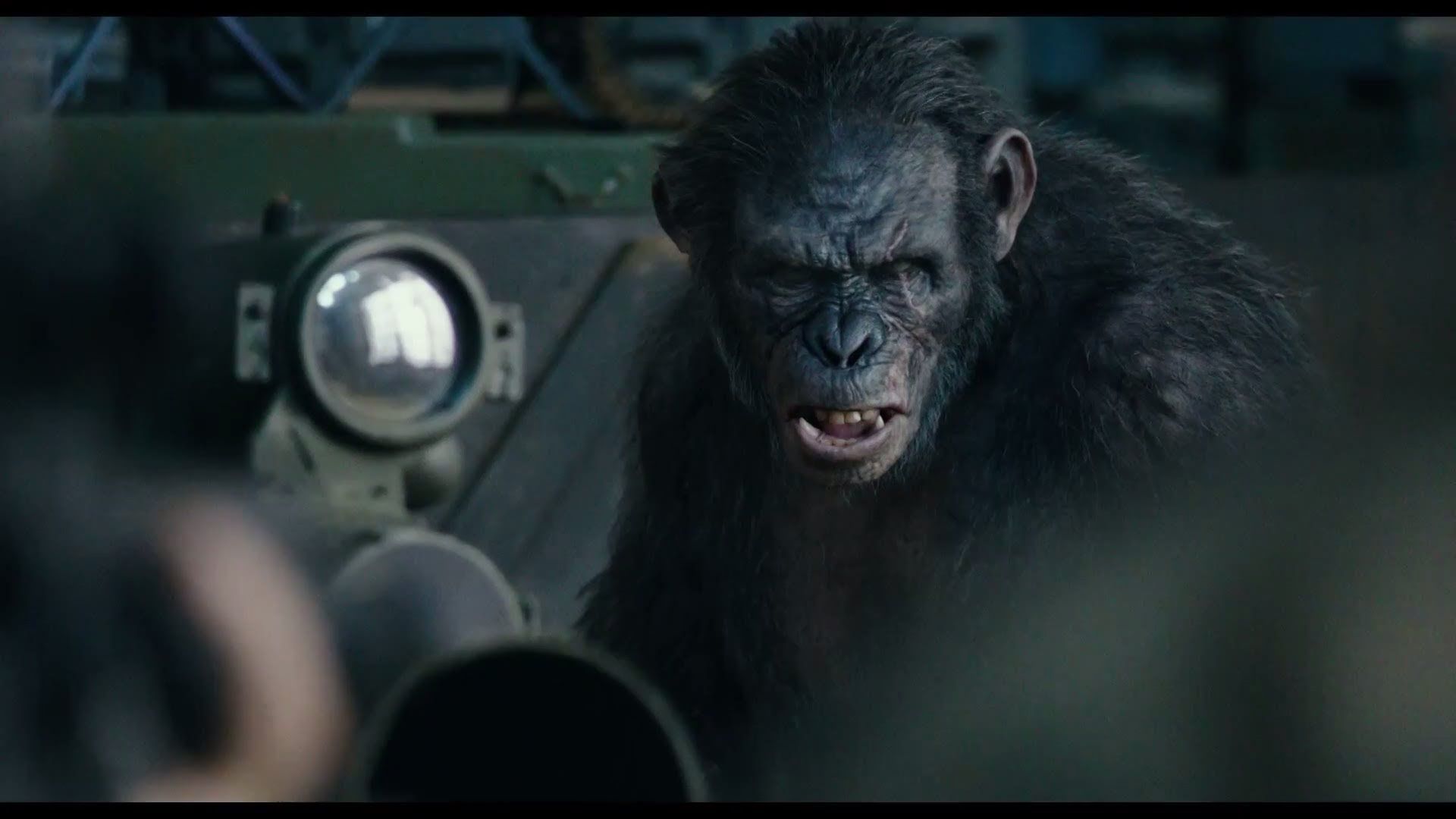The worst thing about Dawn of the Planet of the Apes is that it ends.
Director Matt Reeves effortlessly lets his thematically complex, post-apocalyptic epic unspool in ways that turn CG creations into flesh-and-blood characters, all in service of grounding a movie about gun-wielding apes on horseback in a world as complicated and bloody and real as our own. Dawn is so firmly driven by character-first stakes that we finally have a reason to truly feel something at the movies this summer -- and talk about it long after the credits roll.
As good as Rise of the Planet of the Apes is, Dawn supersedes it in every way by taking the Dark Knight approach: escalation through organic “what-happens-next” plotting, with every inspired choice and scene building to a near-perfect conclusion full of constant tension and heartbreaking character beats.
True to its franchise roots, Reeves, along with screenwriters Mark Bomback and Amanda Silver and Rick Jaffa, succeed at what great sci-fi does best: tell a story about humanity through the eyes of fantastic beings and situations. In this case, apes struggling to preserve their way of life free from humans, but at risk of being infected by humanity’s darker traits.
Dawn begins where Rise ends: tracking the progress of the Simian Flu across the globe as it wipes out humankind – save for a small band of San Francisco survivors.
While in search of a hydroelectric dam that can bring power back to the ruined city, Malcolm (Jason Clarke) and Ellie (Keri Russell) must go through Caesar’s territory. One of Clarke’s men encounters Rocket’s son Ash, and in a moment of hate-induced fear, Ash takes a bullet to the shoulder. Tensions quickly rise as Malcolm must convince Caesar not only to let his people get the dam working, but to trust humans – all while Caesar’s number two, Koba, struggles to serve both his leader and his desire to eradicate humans for using him in lab experiments.
The nature of trust and how peaceful ends are rarely achieved without the use of violent means are only two of the threads woven throughout Dawn’s rich thematic tapestry – which are all the more compelling and effective due to the subtlety of their execution. This is not a film about black or white hats; its characters are firmly rooted in the gray. The film doesn’t glorify war, but it does lionize those who fight them so we don’t have to – therefore making it hard to choose a side in this conflict but easy to relate to both.
All of this emotional heft would fall apart if not for the strong foundation of the film’s terrific opening scenes. It’s amazing to watch Caesar and his people build a culture, learn to read, write, speak and hunt. Nearly 15 minutes of photo-realistic apes talking via sign language occupies a summer blockbuster from the studio that gave us three movies about Alvin and the Chipmunks. These scenes represent the type of purely visual storytelling that film students should and will study for years to come.
Even more incredible is the work of Andy Serkis and Toby Kebbell.
The latter steals the show as Koba, arguably the most complicated and tragic of characters in the series’ history. A scene where Koba is caught inside the humans’ weapons depot and fakes his way through a circus-ape pantomime to escape resulted in applause at my screening. The subtext and nuance here, the fact that you can see this collection of pixels think behind its digital eyes in ways few human actors can … to label the scene transcendent vaguely approaches what we’re seeing here.
Weta’s talented team of animators, coupled with the Oscar-worthy work of Serkis and Kebbell, have made the most effective motion-capture performances to date on screen. The apes, with each patch of matted fur or tear that shoelaces down their cheek, reveal a humanity that rivals that of their human counterparts – a sight truly worth paying twice to see.
Reeves structures the film around thematic mirror images and literal bookends. The climatic showdown between Clarke and his number two, played by Gary Oldman, is juxtaposed with Caesar and Koba’s final fight. One side squares off with their fingers on triggers and detonators, the other uses nothing but bloodied fists. Cutting back and forth between the two, the film subverts expectations with its reveal of how each side fights to the death.
A few clunky exposition bits and a lack of resolution for Russell’s underserviced character and Clarke’s son, played by Let Me In’s Kodi Smit-McPhee, don’t drag the film down but they are noticeable. But we’ll take those shortcomings if it means we get jaw-dropping sequences like the one that unfolds all in one take, from the back of a spinning tank turret, as Koba commandeers the vehicle to finish his assault on the human’s compound.
At what point does war become a justifiable, if not inevitable, act to ensure peace? That’s the dilemma forced upon Caesar – one that his good intentions arguably courted. And in the film’s bittersweet final moments, between Malcolm and a weary Caesar, the realization our ape leader faces honors another tradition of the franchise: a much-earned downer ending.
As Reeves pointed out while making the press rounds, Dawn shows us why it’s not “Planet of the Humans and Apes.” The opportunities for such co-existence are within either side’s reach, but their hate and fear let it slip through their fingers.
Landmark special effects and a director working at his highest level yet are responsible for this sci-fi parable disguised as popcorn entertainment. The result isn’t just the best movie of the summer, but one of the best films of the decade.
Dawn of the Planet of the Apes opens Friday nationwide.



